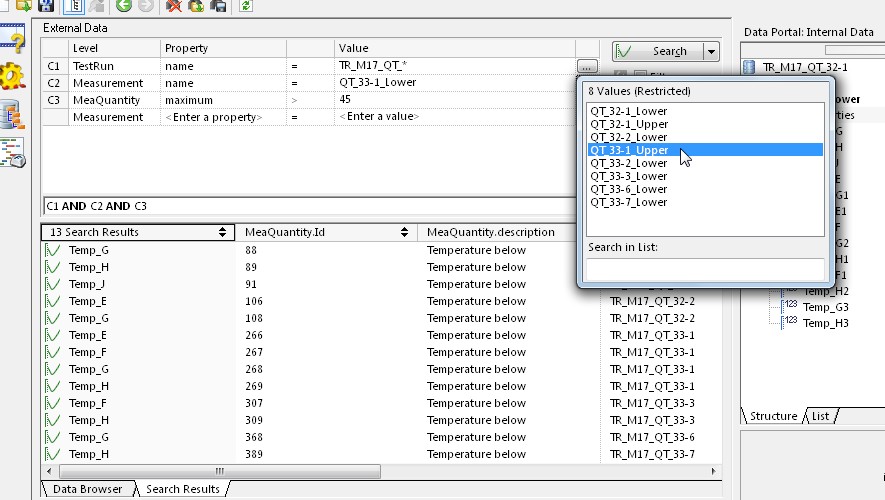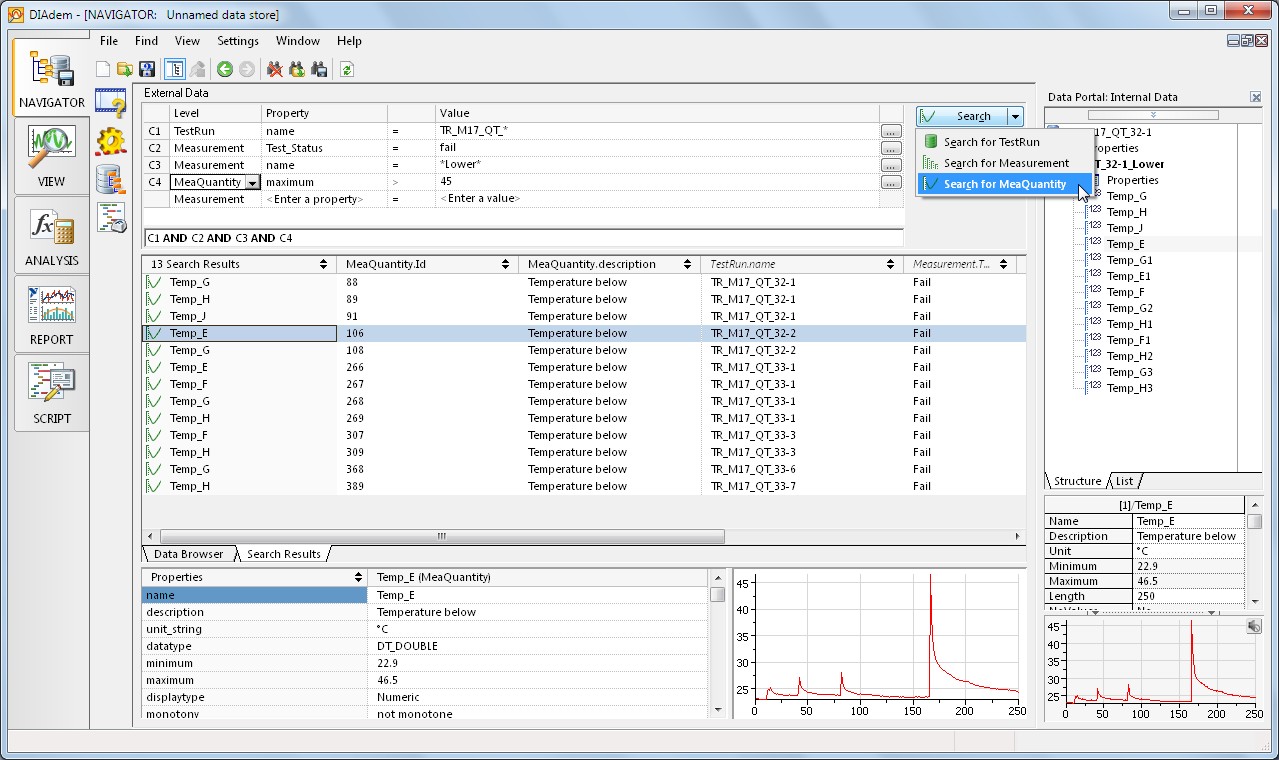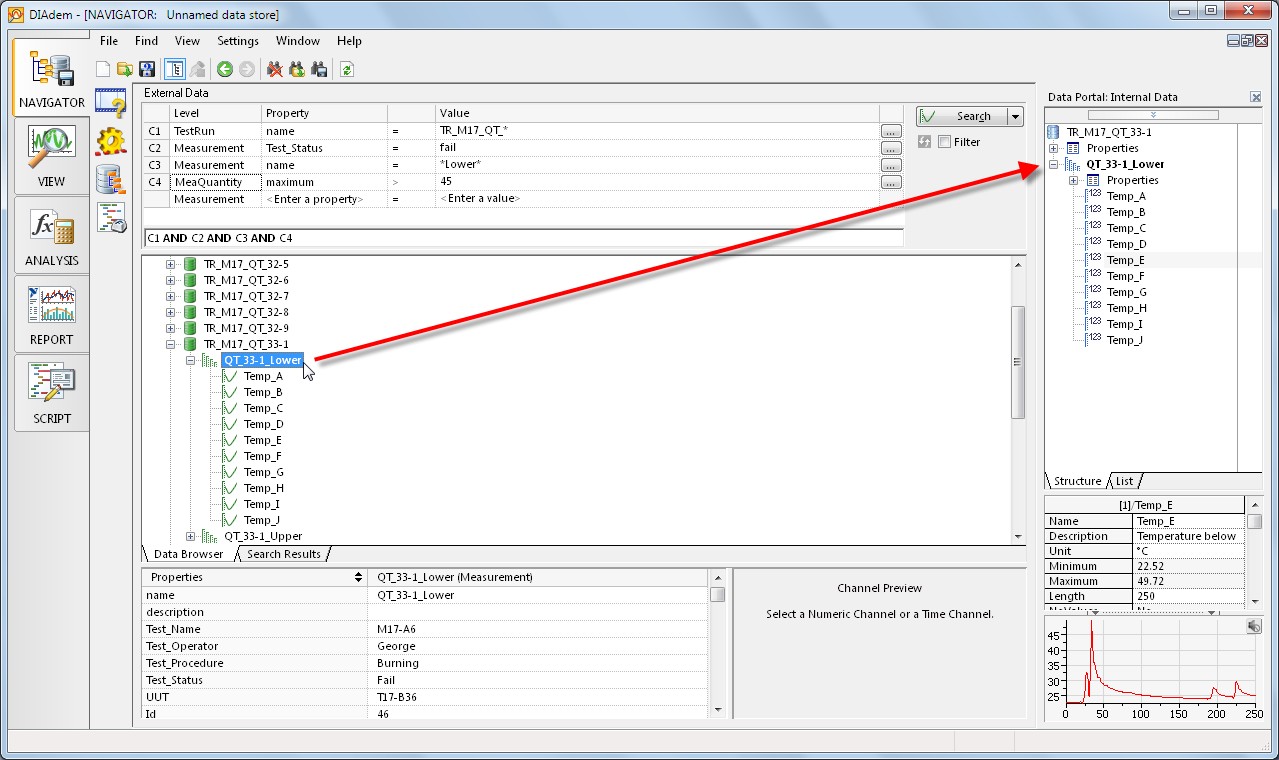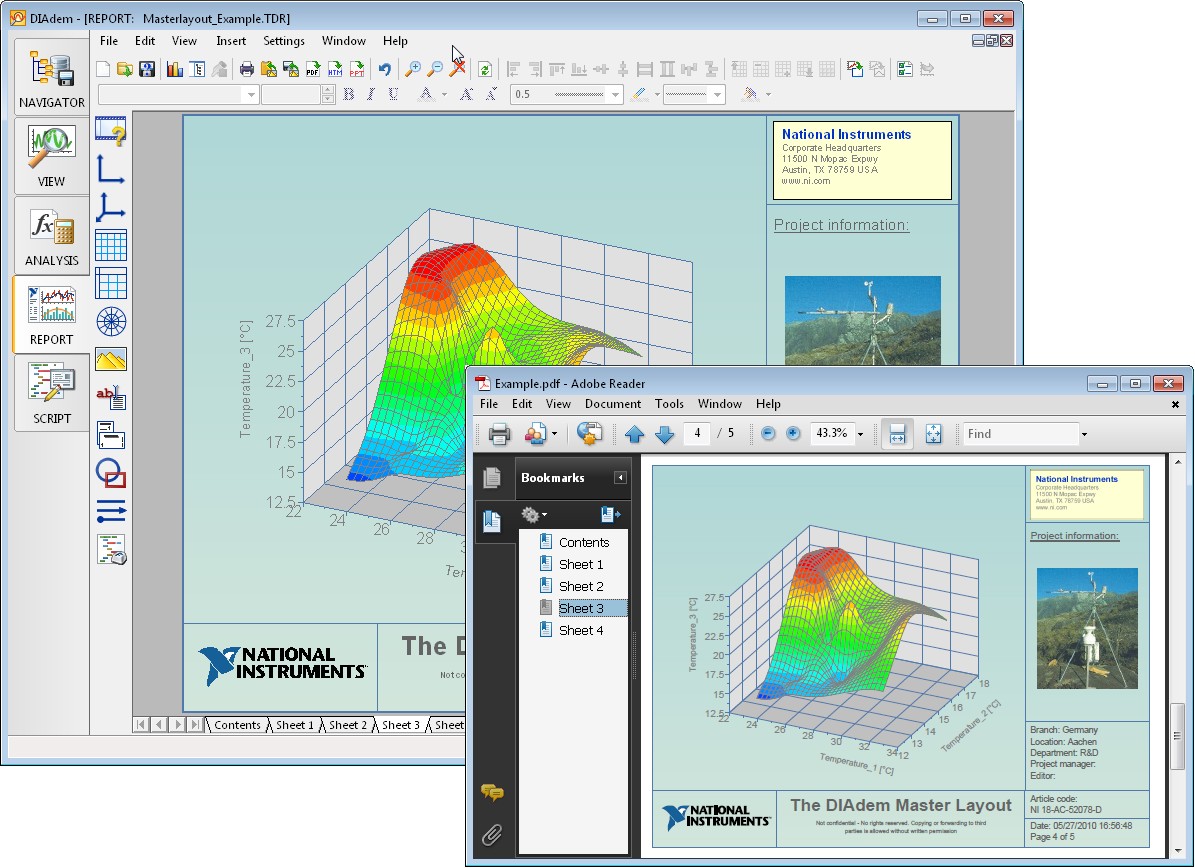Navigating ASAM ODS with NI DIAdem
Overview
The ASAM ODS standard was created to simplify the universal interpretation of data acquired from testing, evaluation, and simulation applications. The popularity of the standard today can be attributed to the foundation it provides as a stable yet adaptable and extensible model applicable to a wide array of test and measurement applications with varying requirements. NI has abstracted some of the complexity and details of the ASAM ODS standard-defined interfaces for data storage and retrieval from the user via its model-driven Universal Storage Interface (USI) technology, an underlying data communication layer that groups together input and output routines common to all data sources (including common file and database formats). By leveraging the power of USI, the redesigned ASAM ODS browser introduced in NI DIAdem 2010 becomes a powerful client to ASAM ODS data sources that allows scientists and engineers to more easily realize the flexible solution that they set forth to achieve by adopting ASAM ODS. To read more about ASAM ODS, you can read the introductory white paper ASAM ODS 101.
Contents
- Navigating the ASAM ODS Data Model with NI DIAdem
- Browsing ASAM ODS Data Stores
- Constructing Advanced Searches for ASAM ODS Data
- Loading Data with Drag-and-Drop
- Learn More Today
Navigating the ASAM ODS Data Model with NI DIAdem
The ASAM ODS standard defines interfaces for data storage and retrieval. However, the concept of standardized interfaces for data storage and retrieval is not unique to ASAM ODS; in fact, many database and file formats define similar application programming interfaces (APIs) that clearly specify the required routines for writing data to or reading data from their physical storage formats. NI has built upon the standard-defined interfaces for data storage and retrieval across a variety of formats to create its Universal Storage Interface (USI) technology, an underlying software abstraction layer for data communication found in many NI software environments. USI abstracts the user from the low-level programming required to store or retrieve data in most formats, including ASAM ODS. For example, with USI, the user does not require low level knowledge of the operating system commands necessary to create an ASCII file on disk. Similarly, USI abstracts the complex details of the ASAM ODS access functions for data storage and retrieval from the user.
DIAdem provides a browser for ASAM ODS data sources that fully leverages the power of USI. DIAdem provides a communication interface that is extensible enough to handle future additions or modifications to the ASAM ODS standard, and can easily interface with data stored in ASAM ODS AOP servers and both Classic and XML ASAM ODS Transport Format (ATF) files. By using USI as an abstraction layer for ASAM ODS and file-based data stores, finding, browsing and loading data from any of these common data sources is a seamless experience.
Browsing ASAM ODS Data Stores
The DIAdem NAVIGATOR provides a simple and intuitive user interface for browsing data stored in compliance with the ASAM ODS standard. By simply connecting to an ASAM ODS database or choosing an ATF file, DIAdem displays the data hierarchy contained within the data store including AoTest, AoSubTest, AoMeasurement, and AoMeasurementQuantity nodes. You can quickly expand and collapse the hierarchy to traverse the ASAM ODS data structure, and by simply selecting an item that maps to the AoMeasurementQuantity base model element, you can preview the data in the signal as shown in Figure 1.
Figure 1. To preview a signal, simply select a node in the data hierarchy that was derived from the AoMeasurementQuantity base model element.
Constructing Advanced Searches for ASAM ODS Data
Manually browsing the ASAM ODS data structure is not the most efficient way to quickly find the data you are looking for, especially as your application scales. In order to identify the exact data sets you are interested in, you can use DIAdem to construct advanced queries to isolate pertinent data within ASAM data stores. DIAdem abstracts all required knowledge of both databases and the ASAM ODS standard to make query construction interactive and intuitive. For example, when choosing properties from elements in the ASAM ODS hierarchy to search on, DIAdem presents you with a list of all available options as shown in Figure 2.
Figure 2. DIAdem makes query construction simple by presenting you with a list of available properties to search on. In this case, the properties listed describe the items derived from the AoMeasurement element.
After selecting a property to search on, DIAdem can show you all of the possible values of the selected property, as shown in Figure 3, which helps ensure the accuracy of your query conditions. Because query conditions build upon one another in a consecutive fashion, DIAdem automatically filters available results based upon the conditions that have been previously specified.
Figure 3. DIAdem provides you a list of all possible values of the property you've chosen to search for, which helps ensure search accuracy.
Once you construct and finalize search conditions, you can use Boolean logic to determine the way each individual query condition influences search results. For example, in Figure 4, all four search conditions (C1, C2, C3, C4) are combined using Boolean AND, so that all four conditions must evaluate to true in order return a qualified result. Using Boolean OR, the logic behind returned search results could be changed.
When searches are performed using DIAdem with ASAM ODS data sources, you can choose to return tests, measurements, or measurement quantities, providing flexibility in the level of detail of the data returned from queries. For example, by choosing to return results as tests, you can quickly view all tests that contained even a single failed signal; by choosing to return measurement quantities, you can view precisely those signals (from any measurement or test) that actually failed. With the ASAM ODS Data Browser, searching ASAM ODS data is now as simple and powerful as using the NI DataFinder to search files.
Figure 4. By choosing to return results as measurement quantities, you can view only the signals that meet your specified search conditions, including those from different tests and measurements.
As you construct advanced queries using DIAdem, you can also filter the tests, measurements, and measurement quantities displayed in the ASAM ODS Data Browser so that the only data shown in the browsing view meets the search criteria specified.
Loading Data with Drag-and-Drop
After you browse or search for data sets that require further visualization, analysis, or reporting, loading data into the DIAdem environment is as simple as dragging-and-dropping. You can drag-and-drop tests, measurements, or measurement quantities from the ASAM ODS Data Browser or from Search Results directly into the DIAdem Data Portal for instant loading of data. DIAdem also features the declaration of custom Loading Configurations that parameterize the properties of the ASAM ODS data store that will be loaded into the Data Portal for complete control over how information from the data store is loaded.
Figure 5. Loading data into the DIAdem environment for further visualization, analysis, or reporting is as simple as dragging-and-dropping data into the Data Portal.
Once you have loaded data into the DIAdem environment, it is completely accessible by the other panels in the environment and available for continued interaction. DIAdem has a robust feature set that extends far beyond merely browsing and searching for data. Using DIAdem, you can interactively visualize and inspect data, perform complex analysis, create publication ready reports using a what-you-see-is-what-you-get (WYSIWYG) editor, and automate repetitive tasks. To learn more about the capabilities of DIAdem by viewing short introductory videos, see What is DIAdem?
Figure 6. You can perform interactive inspection, complex analysis, and even create and export template-based WYSIWYG reports in DIAdem.
Learn More Today
Without an intuitive, fully-featured software client to ASAM ODS data sources, the flexibility in the ASAM ODS standard and the effort required to adopt the standard are completely lost. DIAdem is a powerful client to ASAM ODS data sources (both servers and transport files) and features a variety of additional tools to help manage, process, and report on data.
- Learn more about the ASAM ODS standard
- To learn more about NI DIAdem and view short example videos, see What is DIAdem?
- Evaluate DIAdem today for a free, fully-featured 7-day trial of DIAdem





